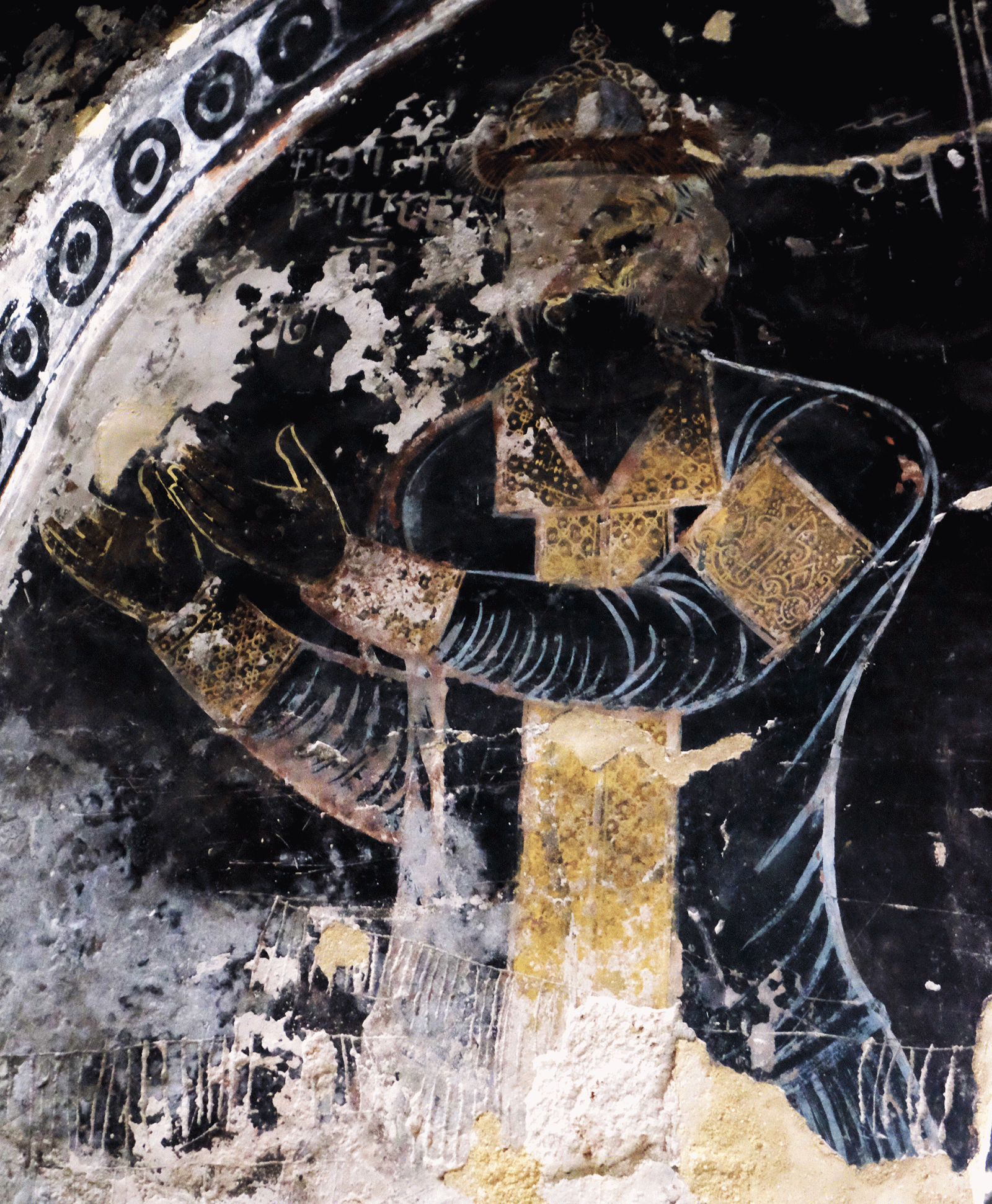Abendvortrag
Finbarr Barry Flood and Irina Koshoridze: Wrapping the Cross in Arabic: Islamic Textiles in Medieval Georgia

This lecture introduces a recently initiated collaborative project studying some medieval Islamic textiles preserved in the Democratic Republic of Georgia. The reception of luxury textiles from the medieval Islamic world in Christian contexts is a well-documented phenomenon. The medieval churches and church treasuries of Georgia are especially rich in relevant materials. These include both a rich array of spectacular Islamic silks now preserved in Georgian museum collections and wall-paintings depicting Georgian elites wearing modes of dress once associated with the Turkic dynasties that dominated the central Islamic lands during the eleventh and twelfth centuries. The proliferation of such modes of elite self-representation was a truly transregional phenomenon: during the same period, wall-paintings from western Tibet show local Buddhist elites wearing 'Turkic' robes of similar form.
In both regions, the robes worn by depicted elites bear arm-bands containing inscriptions or pseudo-inscriptions written in angular Kufic script. Such inscribed bands seem closely related to the epigraphic tiraz textiles well-known from the eastern Islamic world. Although inscribed Islamic textiles from medieval Georgia exist, until recently, apart from these paintings there was little material evidence for the presence of tiraz textiles. The recent discovery of an embroidered tiraz may shed new light on the social function of Islamic textiles in Christian contexts in Georgia. However, it also raises a series of new questions regarding the relationship between the wall-paintings, elite self-representations, Islamic textiles, and medieval Georgian sartorial practices.
This lecture is part of a lecture series organized by the international research project Networks: Textile Arts and Textility in a Transcultural Perspective (4th-17th Cent.).
Finbarr Barry Flood is William R. Kenan Jr. Professor of the Humanities at the Institute of Fine Arts and Department of Art History, New York University. Among his recent publications are an essay on the ingestion of images and words in the edited volume Sensational Religion (Yale, 2014), a discussion of Islamic figurative art in the International Journal of Middle East Studies (45/3, 2013), and a short essay on anthropomorphism (Art Bulletin 94/, March 2012). His books include The Great Mosque of Damascus: Studies on the Makings of an Umayyad Visual Culture (2000), Objects of Translation: Material Culture and Medieval "Hindu-Muslim" Encounter (2009), awarded the 2011 Ananda K. Coomaraswamy Prize of the Association for Asian Studies, and Globalizing Cultures: Art and Mobility in the Eighteenth Century (2011), co-edited with Nebahat Avcıoğlu. He is currently a fellow of the Wissenschaftskolleg zu Berlin, completing a book provisionally entitled Islam and Image: Polemics, Theology and Modernity.
Irina Koshoridze is associate professor of the Institute of Fine Arts, Department of Humanity Tbilisi State University and chief curator of the Oriental collections at the Georgian National Museum. In February 2014 she was appointed as the Director of the Georgian State Museum of Folk and Applied Arts. As vice-president of the Georgian Museum Association and board member of ICOM National Comity in Georgia she organized different local and international trainings for curators. Since 2006/07 she directs the museum study graduate program at Tbilisi State University. As curator of the Oriental art collections at the Georgian National Museum she works on various projects, her research and publication concentrate on Islamic art and the cultural connections between Georgia and neighboring countries (mostly Iran and Turkey) in the 17th to 19th centuries. Koshoridze was a fellow of the New York University department of Art History (2006-2009) and a senior fellow at RCAC Koç University with a project on The architectural complex Rabati in Akhaltsikhe (Georgia): An example of Ottoman-Georgian architecture in the peripheries of the Empire. Recent exhibition projects include: In the search of Beauty - Chinese collections in the Georgian National Museum (2010); Discovery of Japan (2012); New life of Oriental collections (October 2012-ongoing), Mushtaidi Palace decorations - Myth and reality (February-June 2015).
Kooperationspartner
in Kooperation mit
19. Mai 2016, 18:00 Uhr
Museum für Islamische Kunst
Mshatta-Saal
Bodestraße, 10178 Berlin
(Besuchereingang über den Kolonnadenhof)
10117 Berlin
Hinweis
Diese Veranstaltung wird durch Fotografien und/oder Videoaufnahmen dokumentiert. Falls es nicht Ihre Zustimmung findet, dass das Kunsthistorische Institut in Florenz Aufnahmen, auf denen Sie erkennbar abgebildet sein könnten, für die Veranstaltungsdokumentation und Öffentlichkeitsarbeit (z.B. Social Media) verwendet, bitten wir um eine entsprechende Rückmeldung.


